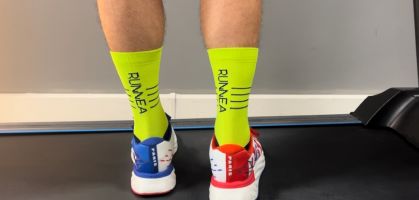It is very common that sometimes we confuse concepts such as jogging and running, but what are their differences? Is jogging the same as walking? This is followed by another big question for many of us: when should we apply each of them?
It is clear that, in one way or another, exercise is necessary to reconcile physical fitness and mental health. To progress as a runner, it will be vital to go through several disciplines and do strength work. So, with our favorite Running shoes in hand, we begin this round of questions.

Along the following lines, our Sports Director, Iker Muñoz, will solve all these doubts. In addition, we will know what are the benefits, fat burning and other factors associated with each of these sports and whether it is convenient to combine both.
Jogging and walking, are we talking about the same thing? What are the differences between both actions?
No, jogging is closer to the concept of jogging, which is halfway between fast walking and running. To get an idea, jogging could be situated at intensities of 7 to 9 km/h.
The main difference will lie in the speed of movement and technical gesture. Sometimes it is less expensive to jog at 7 km/h than to walk at this speed. The strides during jogging will be smaller than when walking fast, which will avoid the drying effect of the heel strike when we walk very fast (the tibialis anterior will be grateful for this).
At the same time, the action of the arms during jogging will be closer to that of running. Making us change the technical gesture considerably.
It is said that running is an effective method to improve our cardiovascular system. Can the same result be obtained with jogging?
Let's say that jogging is a previous step to running. If we want to start running, we must first jog and gain capacity. Therefore, jogging will also generate cardiovascular adaptations in people who are not used to exercise. In this sense, we can say that the same general adaptations will be generated, but the magnitude of these will be smaller.
Obviously, once we have been exercising for some time at the same intensity and with similar durations, it will be necessary to increase the intensity (running) or the duration. In this way we will give the body a stimulus to continue acquiring adaptations and therefore continue to improve.
Is one more beneficial than the other, or vice versa?
One may be more suitable than another depending on a multitude of variables (experience, daily activity, previous pathologies, objectives, etc.).
For a sedentary and/or overweight person, neither of the two proposals may be suitable. At the same time, people who do not have a competitive objective may find running too intense and prefer jogging.
In short, it is necessary to exercise. However, if we want to continue to progress and further improve our fitness, intensity will be a key element and this will come hand in hand with running. Although it is possible to alternate the two modalities without any problem.

From the perspective of the runner who is just starting out, first jogging and then progressing to running?
Exactly, whether you are a beginner or an expert runner. Logic indicates a progression in duration and intensity, both in the training program and during the session.
- For the runner who is just starting out in this world, it is recommended that jogging sessions are accompanied by strength training sessions. In this way, he/she will be able to progress and start running with guarantees.
- For the expert runner, a jog during the warm-up will help him/her to make an adequate transition to more demanding exercises in the same session or to start recovery at the end of the session.
Do you burn the same amount of calories jogging as running?
This is difficult to determine, but at a higher intensity the caloric expenditure will be greater, although other variables such as economy of movement are involved in this process.
Although it is not good to generalize, jogging has a lower energy expenditure than running.

Focusing on an individualized training plan, how and when should one and the other be applied? Can and should both exercises be combined?
It will depend on the objective, but yes, both will always be present. Jogging will be indispensable in the approach of a good progression in novice runners. It will ensure that the athlete starts with a minimum physical condition. At the same time, it is essential to accustom our body to the numerous impacts that we are going to subject it to during the race and for this purpose jogging is very useful.
On the other hand, jogging can be indicated at the beginning of an exercise program or as a means to improve recovery between sessions or within the same session. Therefore it is completely valid and advisable to alternate both modalities, as long as you keep in mind the objective you are trying to achieve with each of them.
Read more news about: Running Training





























